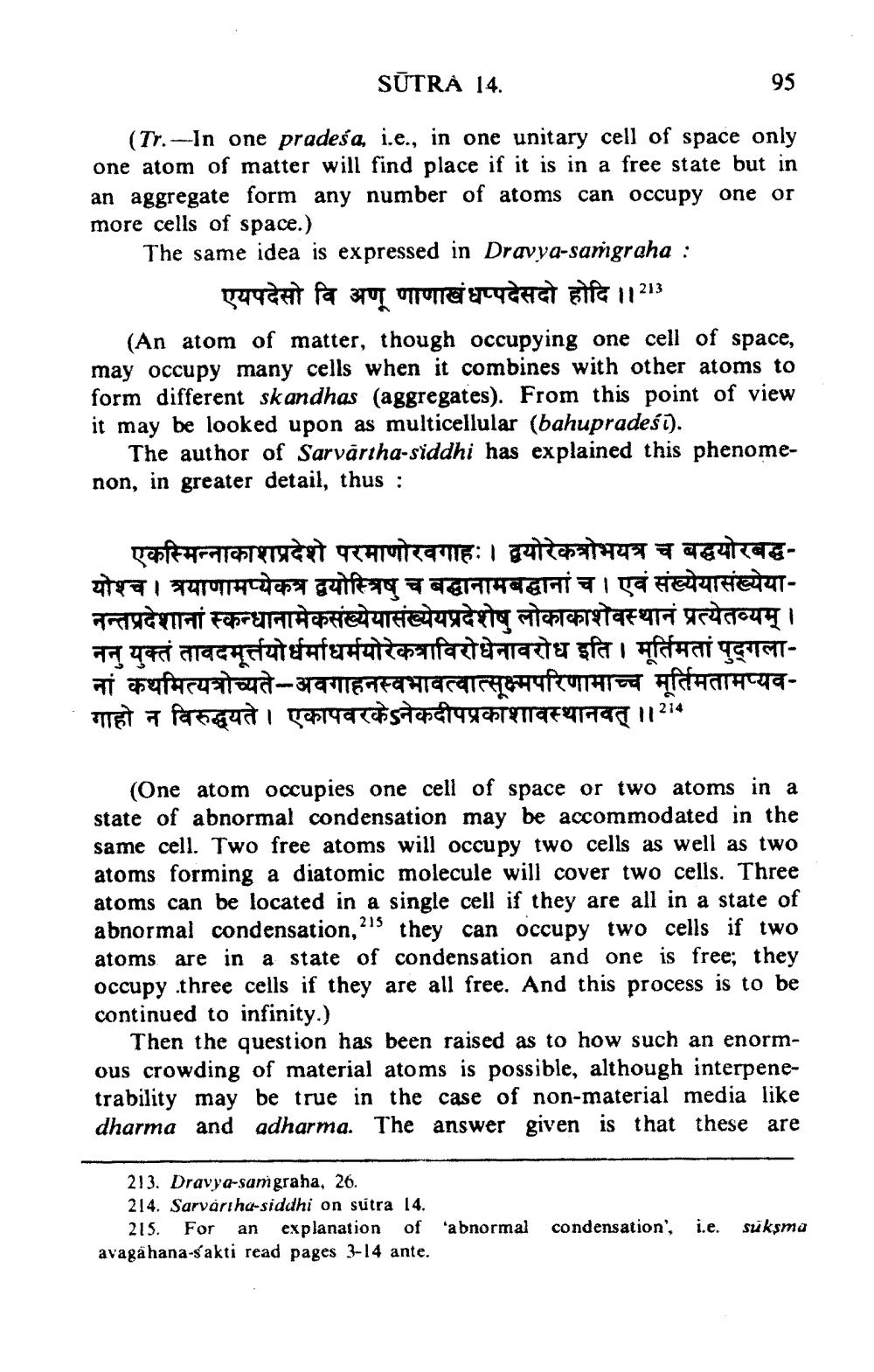________________
SŪTRÀ 14.
95
(Tr. ---In one pradeśa, i.e., in one unitary cell of space only one atom of matter will find place if it is in a free state but in an aggregate form any number of atoms can occupy one or more cells of space.) The same idea is expressed in Dravya-samgraha :
एयपदेसो वि अणू णाणाखंधप्पदेसदो होदि ।।213 (An atom of matter, though occupying one cell of space, may occupy many cells when it combines with other atoms to form different skandhas (aggregates). From this point of view it may be looked upon as multicellular (bahupradest).
The author of Sarvārtha-siddhi has explained this phenomenon, in greater detail, thus :
एकस्मिन्नाकाशप्रदेशे परमाणोरवगाहः। द्वयोरेकत्रोभयत्र च बद्धयोरबद्धयोश्च । त्रयाणामप्येकत्र द्वयोस्त्रिषु च बद्धानामबद्धानां च । एवं संख्येयासंख्येयानन्तप्रदेशानां स्कन्धानामेकसंख्येयासंख्येयप्रदेशेषु लोकाकाशेवस्थानं प्रत्येतव्यम् । ननु युक्तं तावदमूर्तयोर्धर्माधर्मयोरेकत्राविरोधेनावरोध इति । मूर्तिमतां पुद्गलानां कथमित्यत्रोच्यते-अवगाहनस्वभावत्वात्सूक्ष्मपरिणामाच्च मूर्तिमतामप्यवगाहो न विरुध्यते। एकापवरकेऽनेकदीपप्रकाशावस्थानवत् ॥214
(One atom occupies one cell of space or two atoms in a state of abnormal condensation may be accommodated in the same cell. Two free atoms will occupy two cells as well as two atoms forming a diatomic molecule will cover two cells. Three atoms can be located in a single cell if they are all in a state of abnormal condensation, 215 they can occupy two cells if two atoms are in a state of condensation and one is free: they occupy three cells if they are all free. And this process is to be continued to infinity.)
Then the question has been raised as to how such an enormous crowding of material atoms is possible, although interpenetrability may be true in the case of non-material media like dharma and adharma. The answer given is that these are
213. Dravya-samgraha, 26. 214. Sarvarı ha-siddhi on sutra 14.
215. For an explanation of avaga hana-s akti read pages 3-14 ante.
abnormal condensation', i.e. suksma




